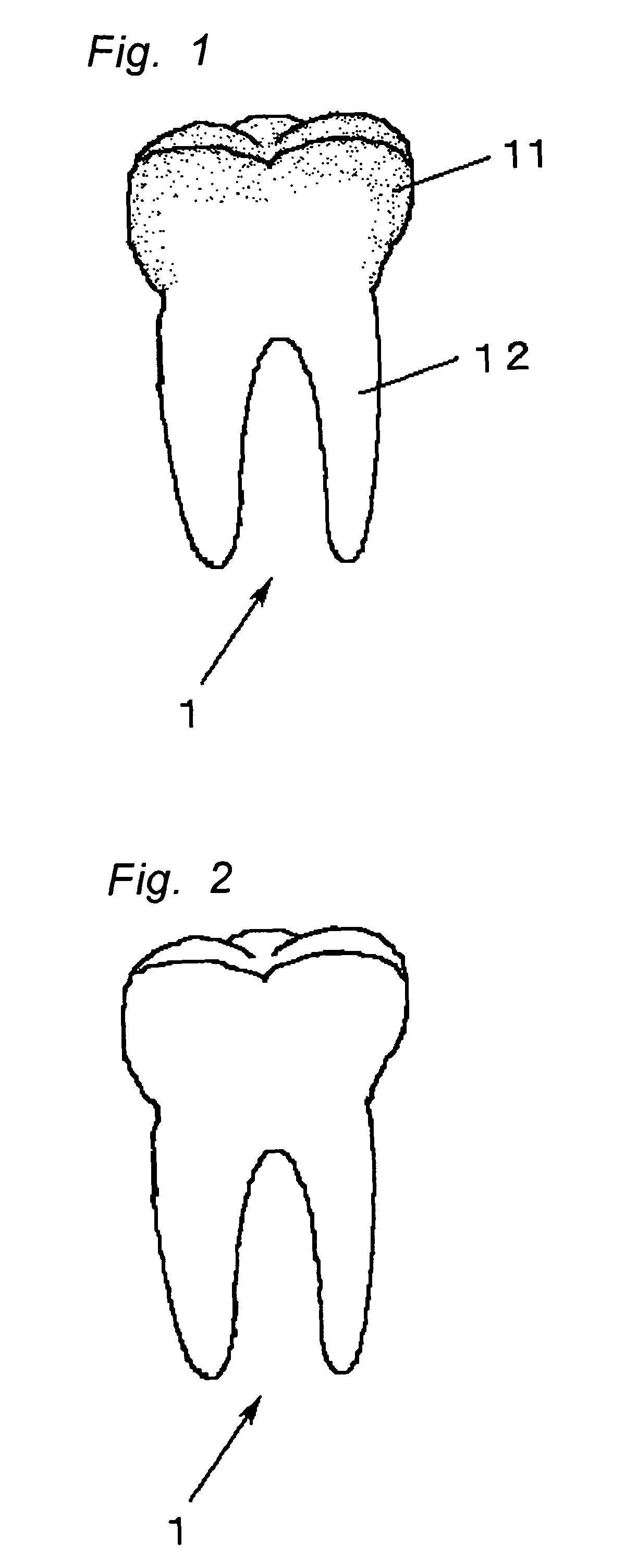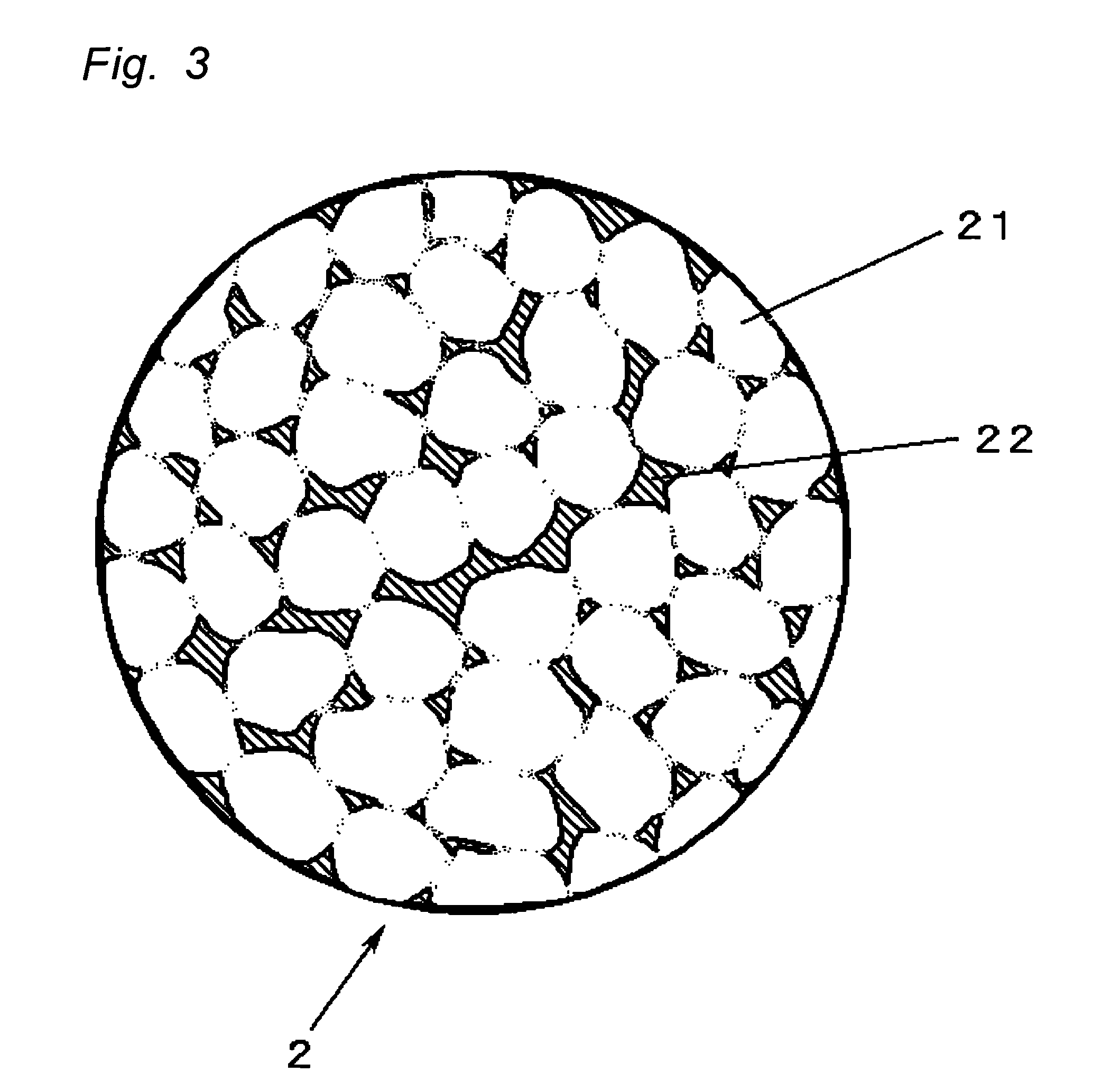Tooth for tooth model, comprising enamel portion impregnated with resin or low melting point glass, and method for producing the same
a tooth and enamel technology, applied in the field of tooth for tooth models, can solve the problems of inability to conduct training freely, inability to achieve training effects, etc., and achieve the effect of quick grinding feel and easy formation
- Summary
- Abstract
- Description
- Claims
- Application Information
AI Technical Summary
Benefits of technology
Problems solved by technology
Method used
Image
Examples
examples
Production of Sintered Body of Tooth
Sintered Body 1
[0143]A die capable of injection-molding into a tooth shape was produced. 1 kg of an alumina pellets for CIM (the content of Al2O3: 100%, average particle diameter: 5.0 μm, the content of stearic acid: 30%) as a raw material of a tooth were injection-molded in a die for tooth to obtain an injection molding 1.
[0144]The resultant injection molding having a tooth shape was degreased and then fired (1,500° C., retention time: 10 minutes) to obtain a sintered body 1.
Sintered Body 2
[0145]A die capable of injection-molding into a tooth shape was produced. 1 kg of an alumina pellets for CIM (the content of Al2O3: 100%, average particle diameter: 1.0 μm, the content of stearic acid: 30%) as a raw material of a tooth were injection-molded in a die for tooth to obtain an injection molding 2.
[0146]The resultant injection molding having a tooth shape was degreased and then fired (1,500° C., retention time: 10 minutes) to obtain a sintered body 2...
PUM
| Property | Measurement | Unit |
|---|---|---|
| temperature | aaaaa | aaaaa |
| particle size | aaaaa | aaaaa |
| porosity | aaaaa | aaaaa |
Abstract
Description
Claims
Application Information
 Login to View More
Login to View More - R&D
- Intellectual Property
- Life Sciences
- Materials
- Tech Scout
- Unparalleled Data Quality
- Higher Quality Content
- 60% Fewer Hallucinations
Browse by: Latest US Patents, China's latest patents, Technical Efficacy Thesaurus, Application Domain, Technology Topic, Popular Technical Reports.
© 2025 PatSnap. All rights reserved.Legal|Privacy policy|Modern Slavery Act Transparency Statement|Sitemap|About US| Contact US: help@patsnap.com



